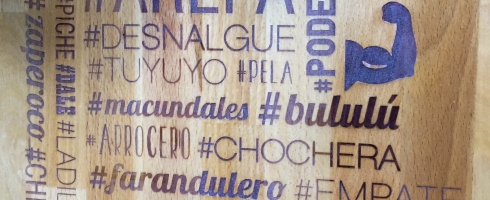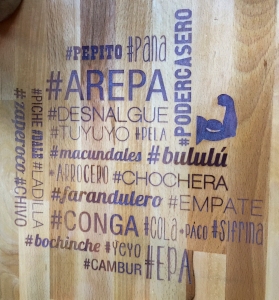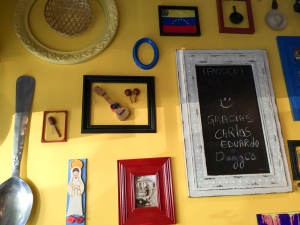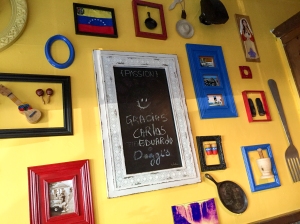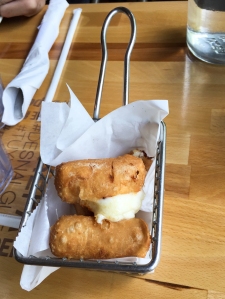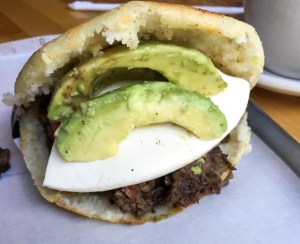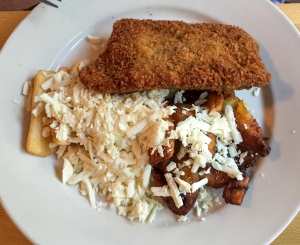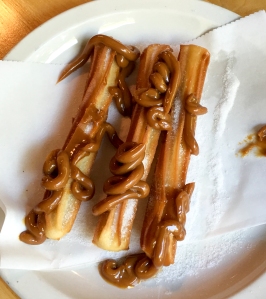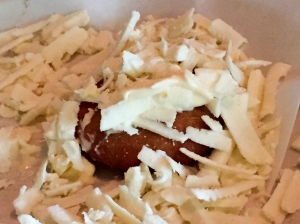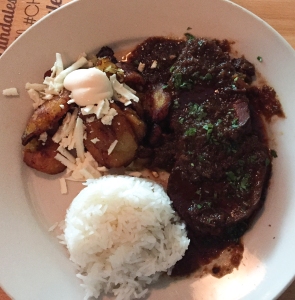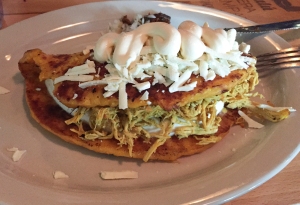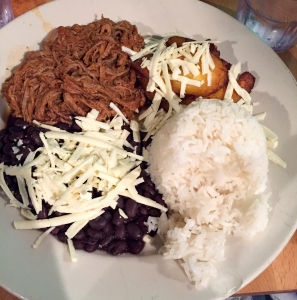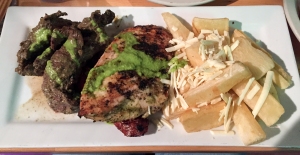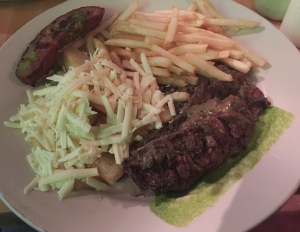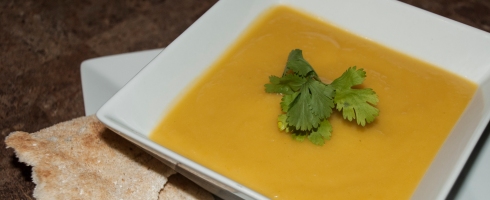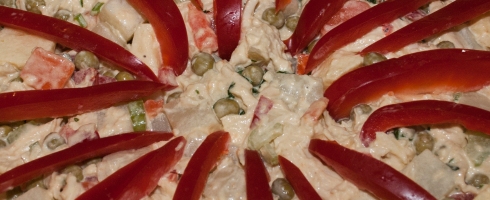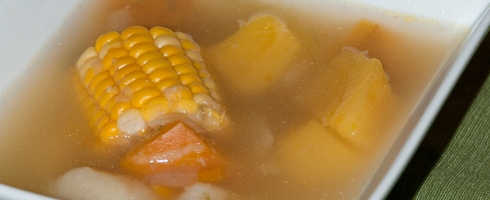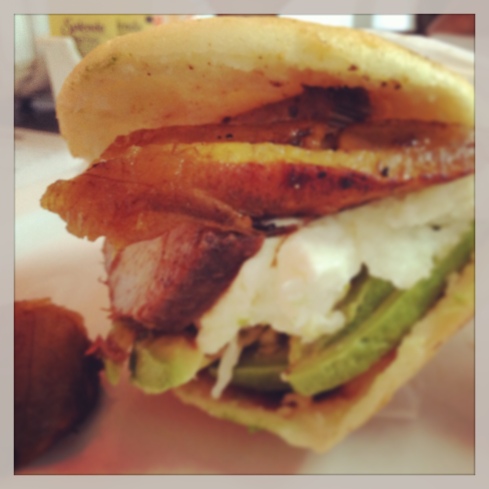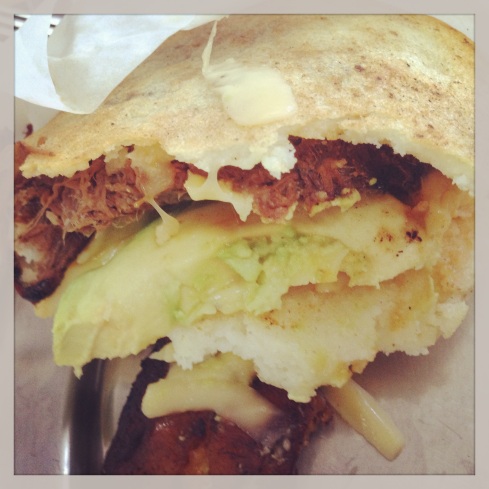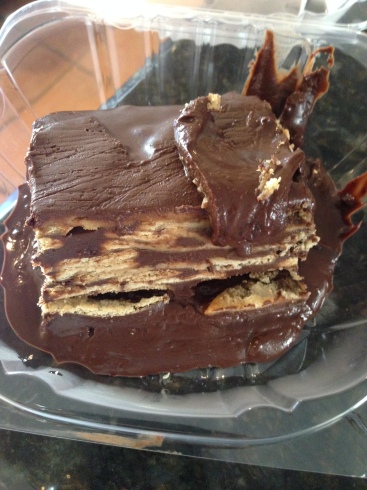A while back, while I still lived in Montgomery, Alabama, I had created a foursquare list for myself of all the Venezuelan Restaurants in South Florida that I wanted to try out and write reviews for, once I moved back down to Florida. In that list, I had included Doggi’s. When I finally moved back down here, I was a bit upset with myself because I was too busy with work and I realized most of the Venezuelan Restaurants on the list are in Miami and Doral, and I lived in Hollywood. I rarely drove down to Miami and I rarely had a chance to try out all these places. I was lucky to find Eats Good 33 (read the review here), but I was unable to enjoy their delicious food because they are only open when I am at work.
Things have changed a bit around here. I moved to Plantation (even further away from all the good Venezuelan Restaurants), and now my commute is longer, giving me less time to try out new Venezuelan places and write recipes of my own for the blog. However, my husband has been driving around all over South Florida due to his new job, and he has been keeping an eye out for new Venezuelan places to try out. Since he drives to Miami all the time, it doesn’t seem that far away to him, and one weekend he suggested to take my sister and I down to the Wynwood Arts District in Miami.
It was kind of a “spur of the moment” plan for that weekend, so we really didn’t make any plans for lunch or anything. After enjoying a nice walk, taking a few photos, and taking in all the artwork on the walls, we were kind of hungry. My husband suggested finding the nearest Venezuelan Restaurant and going there for a late lunch (around 3 pm). He found Doggi’s first, and I immediately remembered it was on my list of places to try. So we headed over there.
On our way there, driving on Coral Way, my sister commented that the drive felt much like driving around Las Mercedes, in Caracas (Venezuela). The bit of traffic, the trees, the road… something about it reminded her of Las Mercedes, and I agreed. We were very lucky to find a parking stop right in front, but that is not the norm, so if you aren’t as lucky, you can park on the other side of the building. There is an Italian Restaurant/Bakery on this corner building and a couple other businesses to the side. Walking towards Doggi’s, you can appreciate the love and detail poured into every single detail in this place. There are a couple metal tables and chairs on the outside, much like I remember a certain ice cream shop in Las Mercedes in Caracas. The door is bright red and has a black wrought iron door in front of it, very much like almost every home in Venezuela. You usually have your wrought iron ‘gate’ and then your wooden door – very nice touch. Once in it feels a bit tight, and there are only about 10 small tables or less. It is small and tight, but I think it makes it homey and cozy. We were also lucky to get one of the only three tables by the window, so that was great. The inside is beautifully decorated with a ton of Venezuelan… things. I don’t really know how to explain these things; they are juts typical Venezuelan things that you would see on the walls of your grandmother’s house. Things like a cuatro, maracas, cast irons, and virgins. On another wall there are countless posters, ads, and logos of all kinds of different Venezuelan brands, sports teams, celebrities, etc. They also have a large projector, which wasn’t turned on, but I can only assume they play all the soccer games when they are on. On that wall they also have very stylized drawings of a male and a female figure dressed in typical Venezuelan folkloric costumes. My poor description of the decor doesn’t really do it much justice, since it sounds crazy and cluttered, but it was actually done in a very minimalistic, simplistic and trendy manner. They also have a smaller TV Screen that displays the current song being played. My husband pointed out that he was shocked that they were not playing loud Spanish music like in most Venezuelan Restaurants we have been to. They had a pop channel, and it was at a perfect volume level, in which you can still talk to the person next to you without having to scream like you are at a club. The tables also have a trendy word-cloud or word collage of cool and unusual Venezuelan slang words. The entire place’s decoration and design is very trendy and up-to-date, but also filled with old Venezuelan traditions and ‘things’.
As soon as we sat down our kind server Gabriela greeted us promptly. We read trough the short but complete menu and we were definitely unsure of what to order. Everything sounded delicious, so it was hard to make a decision. We decided to have an order of Tequeños as an appetizer. They are served in these cute little baskets and they are five small tequeños, but perfect for an appetizer, since you don’t want to be filled up before your meal gets to the table. As soon as I tried one I knew they had it right… the cheese that is. Usually, most Venezuelan places make tequeños with mozzarella, or whatever other white cheese they can find. At Doggi’s they have the right kind of cheese, simple white cheese is what we call it, but it is far from it. It is perfectly salty enough and melts just right inside the tequeños. I had to order a café con leche, since it was very cold outside (for me at least), my hubby ordered the pineapple juice and he wouldn’t stop taking about how good it was, he said it was the freshest pineapple juice he’d ever tried, and then he realized it had fresh chunks of pineapple in it, and he liked it even more.
After giving it a lot of thought, I ordered the Arepa Santa Bárbara, which is an arepa with marinated churrasco (beef), tomato, avocado and I switched the organic white shredded cheese for queso de mano. My sister ordered the Arepa Pabellón, which is an arepa with shredded beef, fried plantain, black beans and organic white cheese. My husband ordered the Milanesa Steak, which is a thin flank steak breaded and fried, with fried yucca and plantains on the side. My arepa Santa Barbara was delicious. The arepa itself was not too big that you can’t even hold it, and not too small that it can’t contain all the stuff inside. The size was just right. The texture was just right too, not too soft, and not too hard, and just the right thickness as well. When I had the first bite with some churrasco beef, I was immediately taken back to Sunday nights at my grandparents’ house when my dad used to make parrillas. The beef was perfectly marinated and cooked, juicy and tender, exactly the way my dad used to make it. It’s cut in bite size cubes so it is easy to eat inside the arepa. Combine that juicy beef with avocado, tomato and cheese, and you create my new favorite arepa. My sister’s arepa de pabellón was delicious, too. The beef was seasoned just right and the plantains were ripe and sweet. My hubby absolutely loved his milanesa steak, so much so, that he ate the entire thing, which he usually doesn’t. He compared it to my mom’s milanesa, which is a huge compliment, since he once ate 3 servings of it in one sitting. Surprisingly, we still had some room, so we ordered desert. We ordered the churros with dulce de leche on top, I think the order usually brings 5 churros but we got 6. They were pretty darn good.
Overall we all enjoyed the food, the ambiance, the décor and the music. So much so, that we went back two weeks later for more. We went there specifically, not just because we were down in Miami. It’s about a 40 minute drive from where I currently live, but it is worth it. We went down there on Valentines Day for an early dinner around 5:30 pm. I called on our way there to reserve a table, because I thought it might be busy, I’m glad I did. This time around we ordered arepitas dulces as an appetizer. They are served with white cheese and nata. They were delicious. Not exactly the same as the ones I am used to, large and with a crispy thin crust. However, they were still delicious, perfectly sweet and complemented by the right white cheese. They where small and thick, and had just the right amount of anise. I ordered the asado negro, which is marinated eye round cooked with brown sugar, green peppers and onions, served with rice and plantains. The asado was incredible, it was just like my grandmother makes it, and I loved the addition of fresh cilantro on top, which balanced the sweetness of the beef and the plantains. The plantains were served with white cheese and nata on top, which is a great extra. The rice is the only thing I was not super excited about. In my opinion, everything at Doggies has an extra something, but the rice doesn’t. This time it was a bit undercooked and I think the type of rice is not what Venezuelans are used to. True white Venezuelan rice is flavored with onions and bell peppers and then they are taken out. Also this rice type seemed thin and small, like Basmati rice. Whereas Venezuelan rice is more like medium grain rice that is not long and not short, and it’s a bit fatter. I appreciate trying to go for a fancier type of rice, but it was the only thing on my plate that didn’t bring back memories of eating asado negro at my grandmother’s house in Venezuela. Just to be fair, my sister disagreed and said the rice was fine. She ordered a cachapa, which is a traditional corn pancake semi-sweet, served with queso de mano inside and topped with nata and white cheese, and she asked to add chicken to it. I do not like cachapas so I did not try it. My sister said it tasted just like the ones sold in Venezuela, and actually better, because it was less sweet, like not overwhelmingly sweet. My husband loved the milanesa so much the first time, that he had them again, even though we had all agreed to try something different. We were very satisfied after appetizers and meals, so we didn’t want any desert. However, we did take a can of Pirulín home, it’s great that they have Venezuelan snacks, I sure miss those. They also have Venezuelan beer brands and malta.
We like Doggi’s so much, we had to go yet again two weeks after that. We simply wanted to eat there again, so we took the drive down there, simply because we were craving some really good Venezuelan food. This time we ordered cazón and cheese empanadas, and grilled chorizo as appetizers. The empanadas were medium sized so if you order these as appetizers, don’t order such a big meal, maybe an arepa. The cazón was delicious and very well seasoned and filled with herbs and veggies that made it even better. The cheese empanada was great, because it’s the right cheese. The chorizo, even though I don’t usually care for it, it was very tasty, just like my dad used to make it on the grill at my grandparent’s house on Sundays. I ordered the Pabellón Criollo as the main entry, which is the most traditional national Venezuelan dish. It came with white rice, black beans, fried plantains, and shredded beef. The beef was well seasoned and juicy. The black beans were cooked well and they weren’t too watery. My sister did point out that the black beans had white cheese on top, which is how I like them, but she said some people eat them with sugar instead, so she would ask for them to be sweetened before putting the cheese on top. The plantains were perfect as usual with white cheese on top. The rice, again was simple, there was nothing great about it, this time it wasn’t undercooked though. My husband ordered the marinated churrasco, which is grilled steak with fried yucca and fries; he also ordered a side of plantains. The beef (as before with the arepa santa Barbara) was seasoned and cooked to perfection. And the yucca fries are delicious with the guasacaca sauces on the table. My sister ordered the Doggi’s parrilla for one, which includes marinated churrasco, chicken and chorizo, with yucca fries. All the protein was cooked and marinated to perfection. We both agreed that it reminded us of my dad’s parrilla on Sundays at our grandparents’ house. All of our plates were on the larger side, so we all had “doggibags” to go, and we all had the food the next day for lunch and we were surprised to see that it still was pretty tasty and somewhat fresh after re-heating it in the microwave.
Overall I must say, if you want to experience true Venezuelan flavors, traditions, customs and ambiance, then visit Doggi’s. What I love about it is that even though the menu seems small, you have a little bit of everything and not only do you have the typical Venezuelan dishes, but also dishes that families in Venezuela eat on a daily basis. The servers are friendly, and you can tell that the owners are on top of their game and involved, which makes the place and the food, the best. As I learned on my first visit, from Gabriela, Doggi’s started as a gentleman selling hotdogs from a cart in Miami, hence the name Doggi’s. Then the gentleman, his wife and three kids opened up the restaurant down the street from where it is now. Now, the three brothers run the place, and I even saw the mother there. This truly makes all the difference in a place, because you can tell they put thought and care into every detail and they run an airtight family business. The place is clean, and the service is fast. I enjoy that they serve you with real plates and forks, it has a restaurant feel, but it is small and cozy like a fast food place, and they ARE fast. They deliver nearby and they also have take-out. You will get a true Venezuelan experience and you wont be disappointed.
The Details:
Address: 1246 SW Coral Way Miami, FL 33145
Phone Number: 305.854.6869
Website: http://www.eatdoggis.com/
Facebook: https://www.facebook.com/DoggisAndMore
Twitter: https://twitter.com/doggismore
Instagram: https://instagram.com/doggis
Hours: Mon – Wed: 10:00 am – 11:00 pm
Thu: 10:00 am – 12:00 pm
Fri – Sat: 10:00 am – 1:00 am
Sun: 10:00 am – 10:00 pm
Menu: http://www.letseat.at/doggis/menu
Categories: Venezuelan
Yelp: http://www.yelp.com/biz/doggis-venezuelan-cuisine-miami-2

